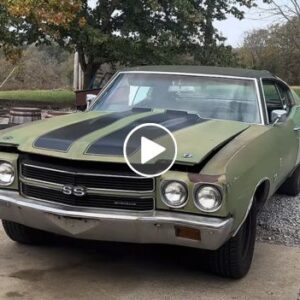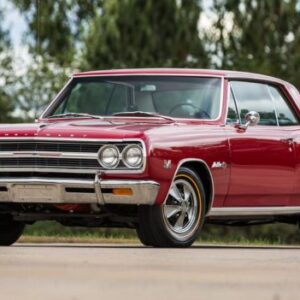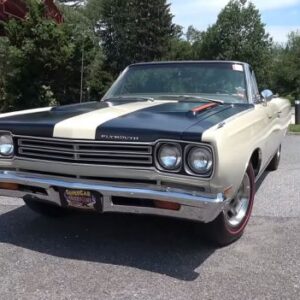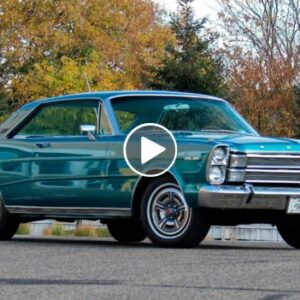Rally racing is believed to be the most demanding of motorsports. Its stages are nowhere near as lengthy as in Endurance racing, but blasting at full throttle, on narrow and technical road sections with loose surfaces certainly isn’t an occupation for the faint of heart. The car is only as good as the driver and vise-versa, which is why, part from a pair of big balls, rally racing requires some pretty serious and robust machinery that could withstand the harshest of conditions. Luckily for us car enthusiasts, rally cars needed to be homologated, meaning civilian versions of the same cars were sold to the public, albeit in limited numbers.
These were real race cars for the road, unlike the modern stuff, for which the marketing departments slap the same label. Some of the rigorous competition was seen in WRC rally racing, which meant engineers were constantly stepping up their game, making the cars better, lighter, and faster. As a result, some vehicles were barely street-legal and in some cases, even sacrificed safety in the name of performance. Nevertheless, each of these vehicles, regardless of whether it raced or not, has its own die-hard fan base, and these 10 rally cars are certainly at the top of the list when it comes to automotive legends.
10 Lancia Stratos HF
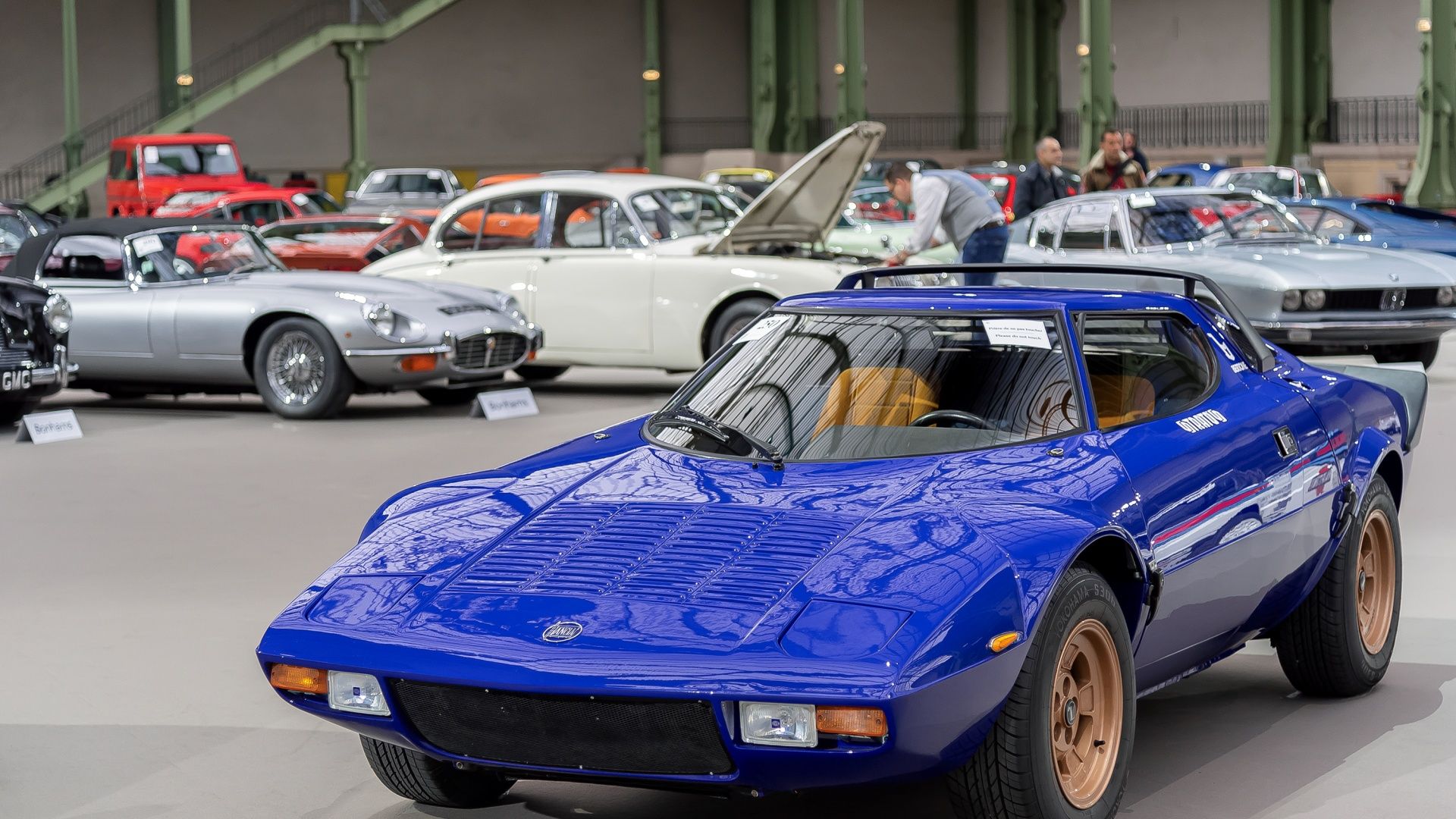
blue Lancia_Stratos_HF_Stradale
Despite its current, sorry state, Lancia used to be one of the dominating forces in the World Rally Championship. There are many iconic Lancia models that enjoy rich and successful racing history, but the Stratos is among the more special ones for a number of reasons. Until that point, all rally cars were, essentially, modified versions of street cars. In 1973, the Lancia Stratos changed that by being the first car specifically developed for rallying.
Specifications
The mid-engine, Bertone-designed coupe features an extremely short wheelbase, making it over-eager to change direction. This was only emphasized more by the 2.4-liter V-6 engine shared with the Dino 246 and Fiat Dino coupe. Between 1974 and 1981, the Lancia Stratos scored 18 WRC victories. In terms of the rallying lineage, the Stratos succeeded the Fulvia HF (High Fidelity). Production ended with 492 cars.
9 Ford RS2000

white Ford_RS200
Any motorsports or car aficionado will tell you that Group B rallying was the most mental of all. Between 1982 and 1986, there were loose restrictions, allowing engineers to go crazy, and create some insane vehicles. Ford’s UK arm didn’t waste any time getting on the bandwagon and joined in with the Ford RS200. The small, mid-engine car featured all-wheel drive and a 1.8-liter, Cosworth, BDT turbo-four. Later versions were dubbed the RS200 Evolution and relied on a 2.1-liter unit.
Specifications
Horsepower ratings ranged, but for the later models, the most common setup produced 580 horsepower. However, in 198r, at Rally Portugal, a Ford RS200 with racing number 15, driven by Formula One driver, Marc Surer, crashed into the public, killing three and injuring many others. The event started a chain reaction, resulting in Group B’s abolishment. Despite causing Group B’s demise, the RS200 scored 19 WRC wins and 32 podiums.
8 Audi Sport Quattro

1984 Audi Sport Quattro Rewind Review: Wheeling the ’80s Rally Monster
At a certain point in the 1980s, Audi’s dominance in rally racing was so absolute, the Quattro all-wheel drive was almost synonymous with WRC. It’s hardly a surprise given Audi introduced four-wheel-drive into rallying. In 1980, the road-going variants were introduced and just a year later, the car was winning races. Michelle Mouton – the first and so far, only female driver to drive and win in WRC – is one of the more notable pilots of the Audi Quattro. The Quattro AWD system was originally developed for military purposes, but it did miracles for the Audi, even with the turbocharged inline-five engine sticking entirely in front of the front axle.
Specifications
From 1981 to 1985, Audi’s Quattro scored 23 WRC victories, with the 1985 win being achieved with Walter Röhrl behind the wheel. 1984 saw a special, Group B version, dubbed the Sport Quattro, which was a whopping 320 mm shorter than the original car. Unlike other cars on the list, the Audi Quattro was a relatively mass-produced car, with 11,452 units produced between 1980 and 1991.
7 Peugeot 205 T16

Now’s your chance to own a wonderful Peugeot 205 T16 | Top Gear
In modern days, French manufacturers (aside from Bugatti) are not doing great in terms of performance models. While, occasionally, they give us proof that they haven’t forgotten how to make a properly awesome performance car, thoroughbred French sports cars were a lot more frequent back in the day. When it comes to rallying, Peugeot took a page out of Lancia and Ford’s book and went the mid-engine route. This resulted in the Peugeot 205 T16. The mid-engine pocket rocket featured all-wheel drive and a 1.8-liter turbocharged four-banger.
Specifications
Some 200 units were built for homologation purposes. In racing trim, power was rated at 300 horsepower, and it only went up from there, in some cases reaching over 400. The T16 moniker stood for Turbo 16, where the number indicated the number of valves. The T16’s gearbox came from the Citroën SM luxury coupe. The 205 T16 also raced in the renowned rally Dakar while its smaller sibling, the 205 GTI faired equally well in Group A and Group N.
6 Lancia 037

Lancia 037 Rally with Martini Livery
Upon arriving in 1982, the Lancia 037 got the unenviable task of succeeding the legendary Lancia Stratos. Unlike other cars, the Lancia 037 was an evolution of the Lancia Montecarlo, also known as Scorpion in the U.S. Underneath the ultra-light, fiberglass body there was a steel, tubular space frame, making the car very lightweight. German racing driver, Walter Röhrl, himself admitted that the steel wasn’t the thickest and the 037 wasn’t a particularly safe car to be in, should you crash in one.
Specifications
Naturally, there was a homologation version called the 037 Stradale, of which 222 units were built. The inline-four engine was sourced from Abarth and featured a very vocal supercharger and dry-sump lubrication. The rally cars were rated at 255 to 325 horsepower, depending on whether it was the Evolution 1 or Evolution 2 model, but Group B variants packed even more power. Lancia 037 did not have the most racing wins, but it was the only rear-wheel-drive car able to stand up to the Audi Quattro.
5 Subaru Impreza WRX STI
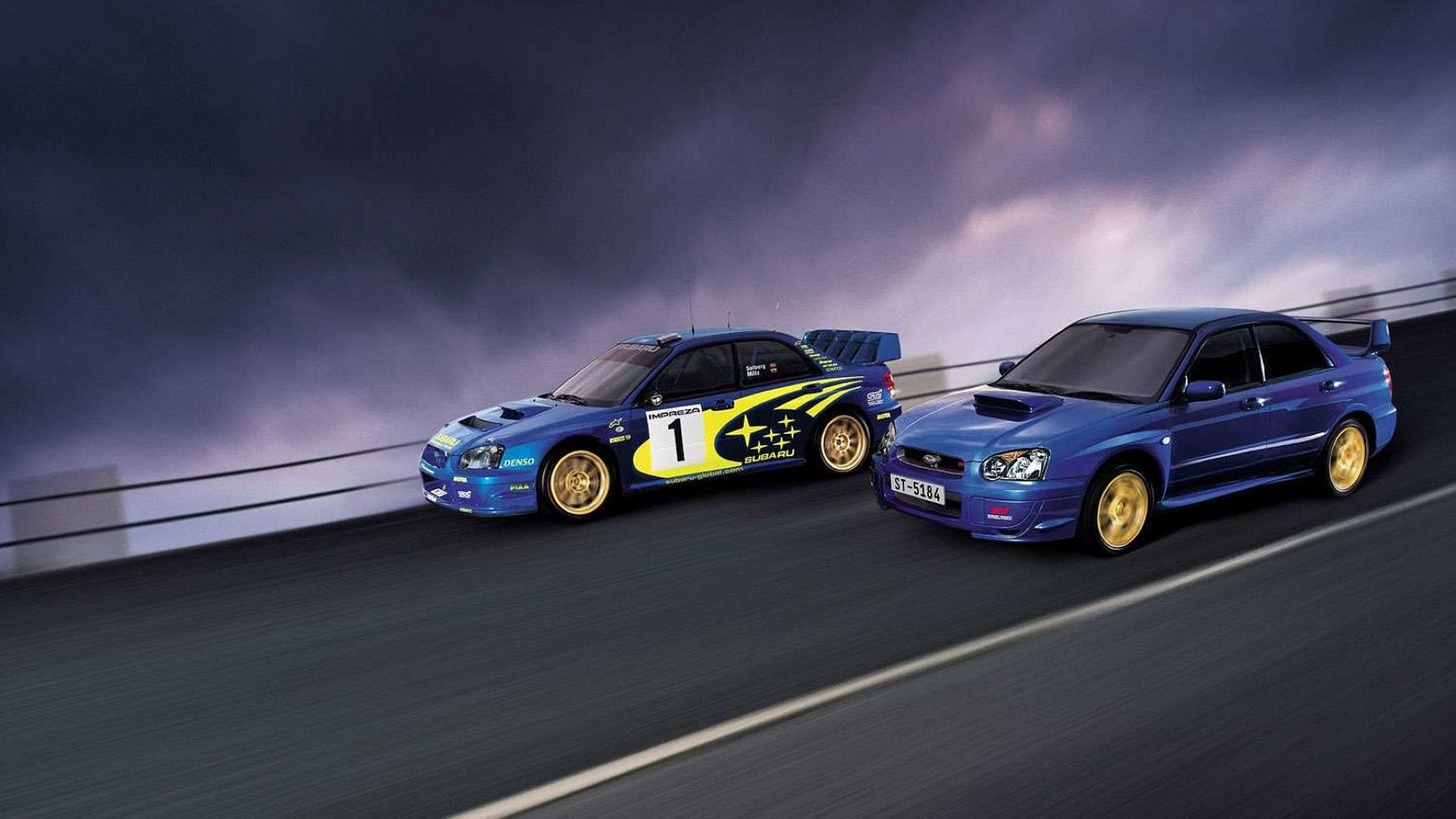
Side shot of the 2004 Subaru Impreza WRX STi next to its rally champ sister
Few things sound as right as Subaru and rally racing. The Japanese brand has been at it for over 50 years. The brand’s first taste of dirt road racing was in 1972, with the Subaru Leone. The Leone was, eventually, succeeded by the Legacy, until finally, in 1993, Subaru decided to switch to a smaller, nimbler car. The first-generation Subaru Impreza WRX (GC8) came and dominated the WRC series. Each next generation improved upon the previous and enjoyed the same success.
Specifications
During the same year, the legendary “555” was introduced, and would grace the bodywork of all Subaru rally cars until 2003. Subaru has a few notable drivers, but Collin McRae was the most legendary of all names to drive the boxer-powered Subaru Impreza WRX. The STI moniker wasn’t added until 2002 with the “Blob eye” facelift of the second generation. With 193 races and 46 wins, the Impreza WRX STI is one of the most successful rally cars of its day.
4 Mitsubishi Lancer Evolution XI
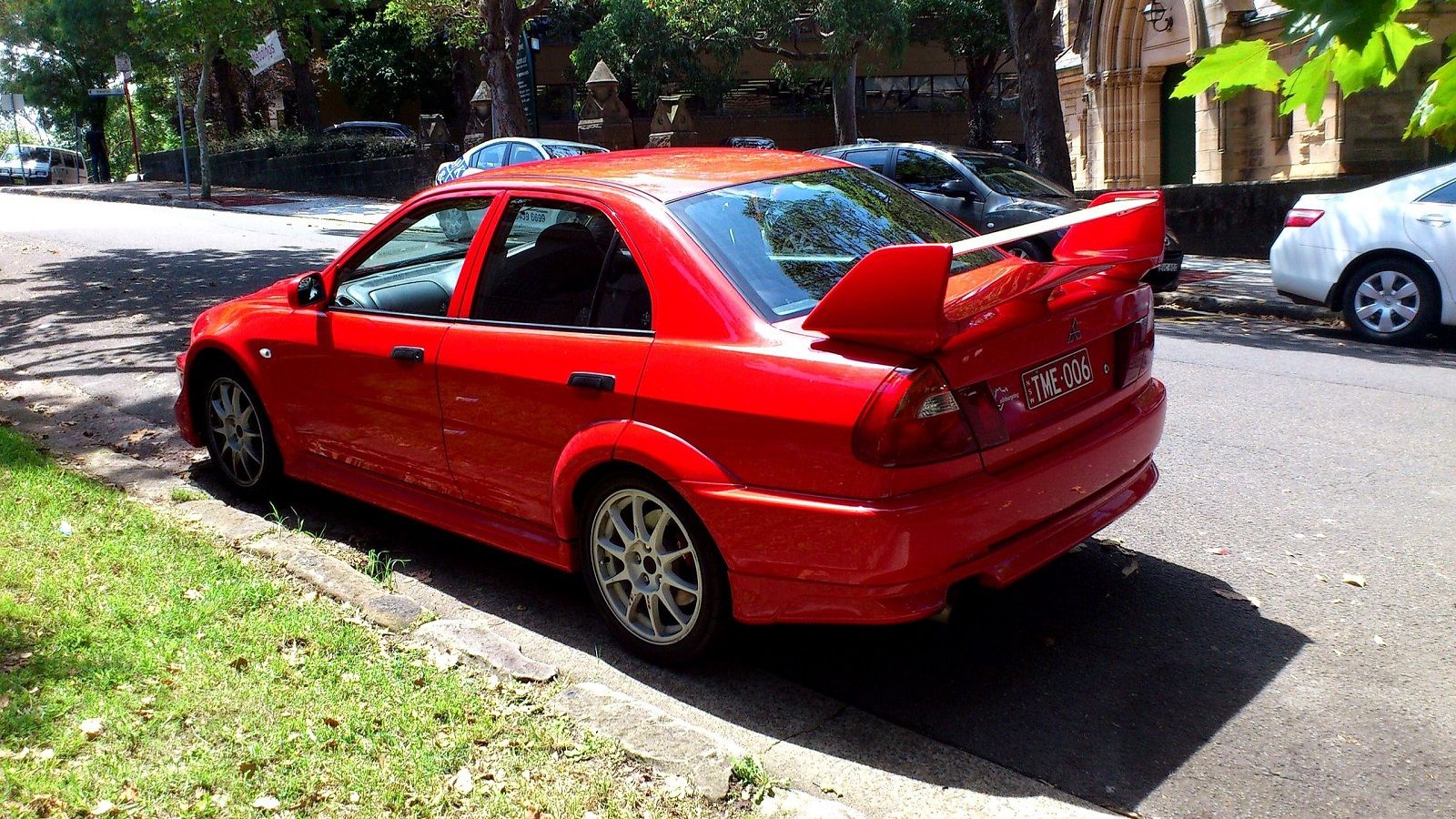
A parked Mitsubishi Lancer Evolution VI Tommi Makinen Edition
Subaru’s rally racing exploits may be legendary, but Mitsubishi has been in that sport since before. The Lancer Evolution versus Impreza WRX STI is one of the most legendary rivalries in automotive history. Mitsubishi’s first taste of rally racing was in 1967, with the Colt Lancer 1600GSR. The World Rally Championship series was founded in 1973, and Mitsubishi immediately entered it. Since 1992, Mitsubishi Lancer Evolution has had 10 generations, and each one was a successful rally car.
Specifications
However, Subaru’s Impreza was a serious competitor and Mitsubishi only managed to outperform the WRX STI in 1999, with the sixth-generation Lancer EVO. It’s no wonder the Evolution VI of all generations is among the most sought-after. That and the fact there’s a special, Tommi Mäkinen edition, commemorating the driver’s achievements behind the wheel of the Lancer EVO. Among the car’s highlights is the legendary, 4G63T engine.
3 Ford Escort Cosworth
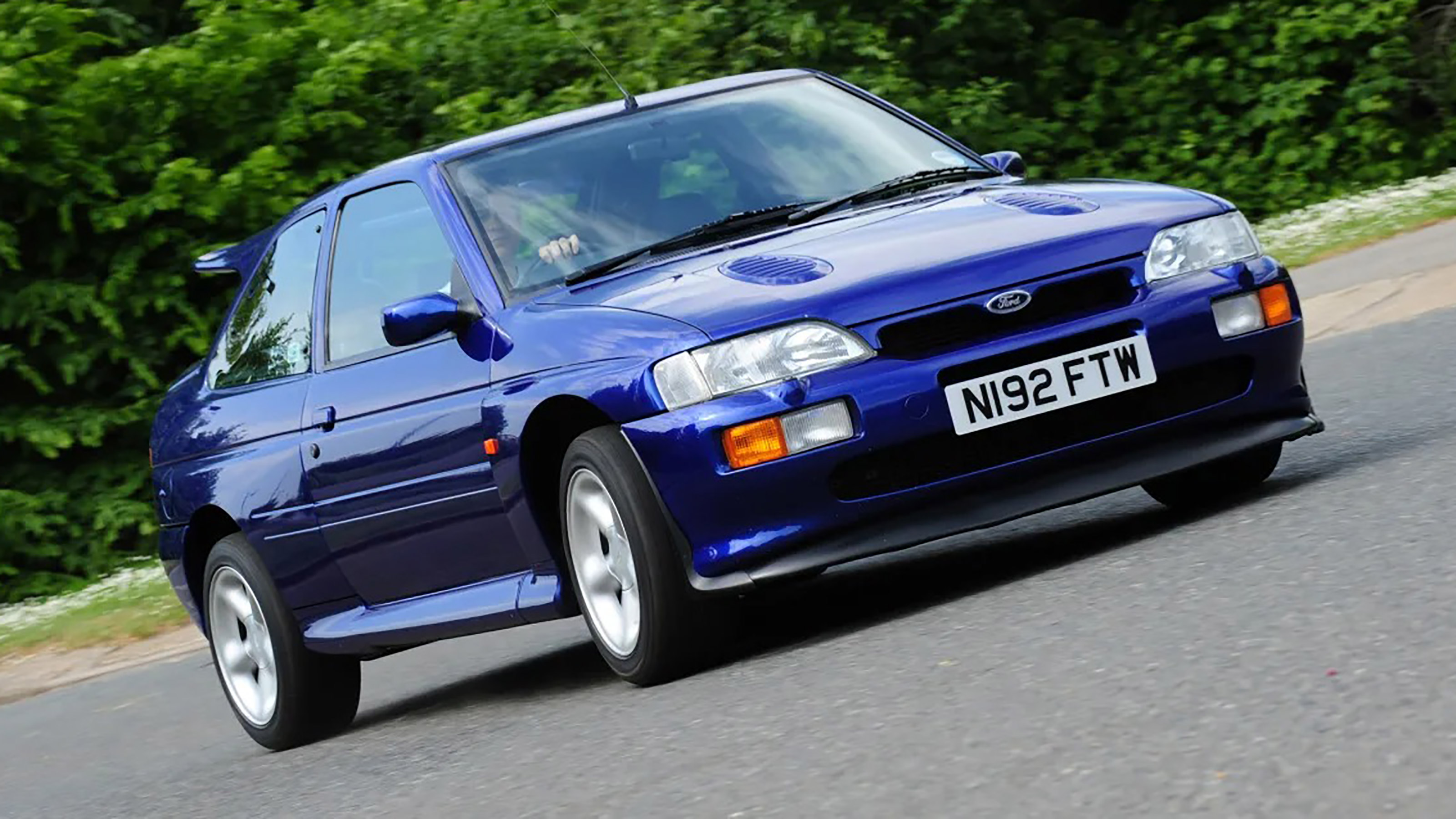
Ford Escort RS Cosworth: history, specs and buying guide | evo
While the regular Ford Escort is as mundane as any commuter car, there are a few performance variants that go well beyond the stigma that surrounds the model. Throughout its six generations, the Escort was never a stranger to rally racing, as it was one of the most consistent model entries when it came to dirt or auto cross racing. When it comes to WRC, the 1992 Ford Escort Cosworth is the pinnacle of the model. As always, the recipe of permanent all-wheel drive, turbocharged engine, low weight, and compact dimentions was faithfully executed.
Specifications
By 1996, a total of 7,145 road-going versions were produced, making this the most mass-produced rally car for the road, after the Audi Quattro. The Cosworth-derived YBT engine was extremely tunable and capable of 1,000 horsepower. Ford’s “Cozzie” as it is endearingly referred to by fans, was an international project between Ford SVO, MGA Developments, and coach-builder Karman.
2 Lancia Delta S4
![Lancia Delta S4 - The Iconic Group B Rally Car [Review]](https://classicacar.com/wp-content/uploads/2024/05/1985-Lancia-Delta-S4-Rally-_3-1-1.jpg)
Lancia Delta S4 – The Iconic Group B Rally Car [Review]
The Italian brand, Lancia, was heavily-invested in rallying, and it dominated a good portion of it, with models like the Stratos, 037, and of course, the Delta. Considered by some to be the true king of hot hatchbacks, the Delta HF Integrale came around in 1988, to pick up the torch from the Delta HF 4WD. The Lancia Delta, in various forms, won the WRC five times in a row.
Specifications
While it was most notably featured in Group A rallying, the Lancia Delta S4 was the HF Integrale’s evil twin, developed for Group B racing. The overall design wasn’t much different, but the S4 switched to a mid-engine configuration and a much more radical bodywork. The entire rear end was one giant clamshell, covering the twin-charged Fiat engine, which was heavily-tweaked by Abarth. In race spec, the Delta S4 weighed just 1,962 pounds (890 kg), and could produce up to 1,000 horsepower.
1 Porsche 953 Dakar
1984 Porsche 953 Rally Car
Porsche is no stranger to racing, but when we think of the brand’s motorsport exploits, we generally, think of Le Mans and other on-track racing series. But Porsche also dabbled in rally racing, and the Porsche 953 was an unlikely success. The basis was a 1984 G-Series 911, with a 3.2-liter, air-cooled flat-six engine. The unit received a lower compression ratio in order to run on low-grade fuel.
Specifications
Porsche 953 was specifically developed for Rally Dakar, and it did extremely well, collecting 19 victories under its belt. The all-wheel-drive system featured a fixed ratio of torque split with 39 percent going to the front, and 61 percent to the rear. Despite the heavy modifications and extra parts, the Porsche 953 Dakar was barely heavier than the standard 911 it was based on
